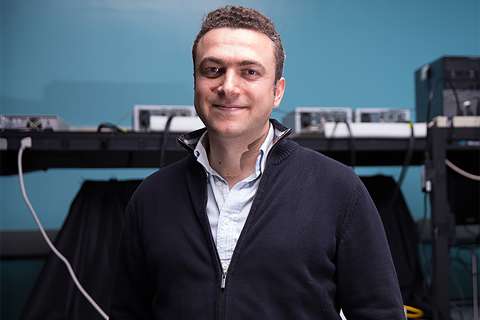UCLA researchers have developed a feedback control scheme that can search for the most effective drug combinations to treat a variety of conditions, including cancers and infections. The discovery could play a significant role in facilitating new clinical drug-cocktail trials.
The best known use of drug cocktails has been in the fight against HIV, the virus that causes AIDS, but drug cocktails also have been used to combat several types of cancer. Often, drugs that might not be effective in combating diseases individually do much better in combination.
With the use of the new closed-loop feedback control scheme, an approach guided by a stochastic search algorithm, researchers at the UCLA Henry Samueli School of Engineering and Applied Science and UCLA's Jonsson Comprehensive Cancer Center have devised an invaluable means of identifying potent drug combinations fast and efficiently. Their findings appear April 1 the journal Proceedings of the National Academy of Sciences.
It has long been a difficult challenge for clinical researchers to determine the optimal dose of individual drugs used in combination. For example, a researcher testing 10 different concentrations of six drugs in every possible arrangement would be faced with 1 million potential combinations.
"With the development of this optimization method, we've overcome a major roadblock," said study author Chih-Ming Ho, UCLA's Ben Rich-Lockheed Martin Professor and a member of the National Academy of Engineering. "There have always been too many choices and too many combinations to sort through. It was like finding a needle in a haystack."
In one test case, the research team examined how to best prevent a viral infection of host cells. Using the closed-loop optimization scheme, they were able to identify, out of 100,000 possible combinations, the drug cocktails that completely inhibited viral infection after only about a dozen trials. In addition, they found that total inhibition of the virus occurred at much lower drug doses than would be necessary if the drugs were used alone; in fact, the concentrations of the drugs were only about 10 percent of that required when used individually.
"Viruses grow very rapidly and change rapidly as well. Because of that, a virus can become resistant to a particular drug," said Genhong Cheng, a member of the research team at the UCLA Center for Cell Control and UCLA's Jonsson Comprehensive Cancer Center. "This is why it's so important to be able to use a combination of more than one drug. If the virus mutates to become resistant to one drug, it is still sensitive to the other drugs."
Drug combinations can also be used effectively to inhibit infectious diseases because resistance to a single drug is very common, according to Ren Sun, UCLA professor of molecular and medical pharmacology and a member of the research team.
"If we can apply multiple drugs against one infectious agent, it probably will prevent the occurrence of drug resistance," said Sun, who is also a researcher at UCLA's Jonsson Comprehensive Cancer Center. "But, of course, when you use multiple drugs, side effects will be strong. With this model, there is a way to optimize the combination to reduce the side effects while maintaining efficacy that will be very beneficial."
"What the search scheme does is it tries to detect trends for optimal output," said Pak Wong, a former UCLA graduate student who participated in the study and is now an assistant professor of mechanical engineering at the University of Arizona. "Basically, the algorithm sees a trend and a direction and drives the trend in that direction. It's like mountain climbing and finding a way to get to the peak. So you keep going, and soon you rapidly find the peak while being guided by a smart search scheme."
In an example used to illustrate the prevention of viral infection of host cells, researchers started with arbitrarily chosen dosages of the drugs. The percentage of non-infected cells under this initial drug-cocktail treatment was fed into the stochastic search algorithm, which essentially helps guide a random search process. The algorithm then suggested the next drug concentrations for producing a higher percentage of non-infected cells. This closed-loop feedback control scheme is carried out continuously until the best combination is found. Randomness is built into the search decision, preventing the trap at local optimum levels and allowing the search process to continue until the optimal drug cocktail is identified.
The model also provides an alternative approach to studying cellular functions. Molecular biologists can identify all the players of a particular regulatory pathway in order to decipher how to block or augment that pathway. Cells are complex systems with many redundant functions, and it is difficult to predict how a cell will respond to multiple stimulations at one time. The model overlooks these details and lets the system determine what works best for itself. If researchers are more interested in how the cellular network functions, this approach can provide an initial bird's-eye view, but it also allows them to home in on the important molecular activities controlled by the best drug combinations.
This search scheme is an extremely effective and versatile tool that can be applied to combat numerous diseases, including cancer, the researchers say, and its multidimensional properties will likely make it useful in a wide variety of additional situations.
The next steps are animal and clinical testing.
The study was funded and supported by the Center for Cell Control, a nanomedicine development center funded by the National Institutes of Health through the Roadmap for Medical Research, and by the Institute for Cell Mimetic Space Exploration, a NASA-sponsored institute.
Researchers Develop Method to Rapidly ID Optimal Drug Cocktails

Related Content
Articles:
Cancer Center Member
Share:



